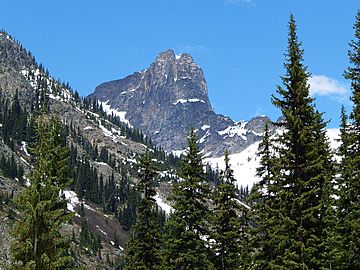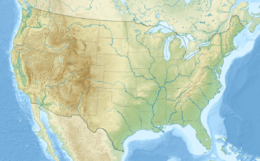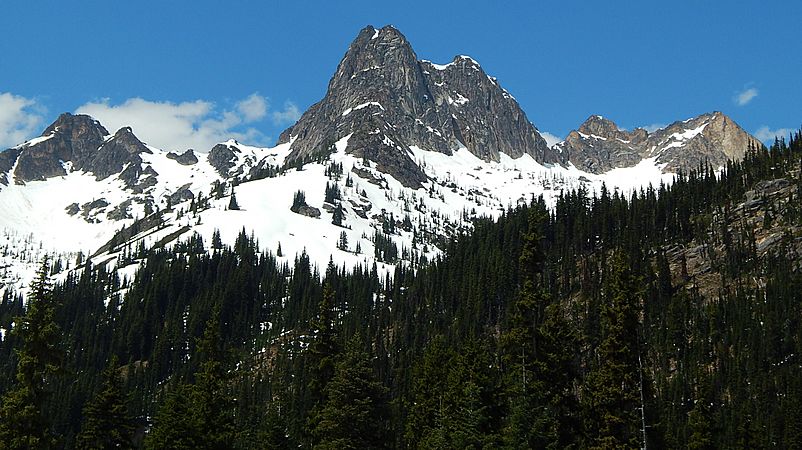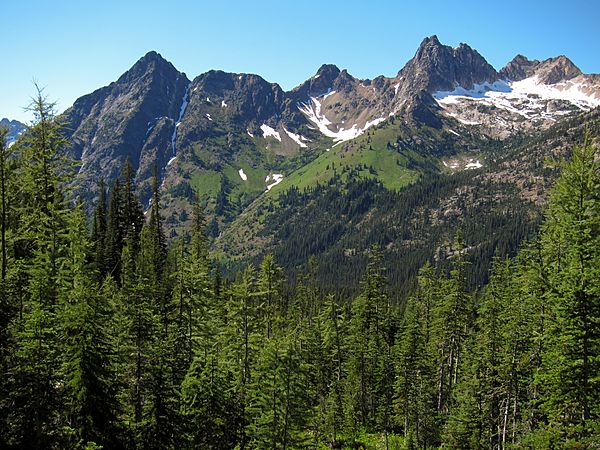Cutthroat Peak facts for kids
Quick facts for kids Cutthroat Peak |
|
|---|---|
 |
|
| Highest point | |
| Elevation | 8,050 ft (2,450 m) |
| Prominence | 1,730 ft (530 m) |
| Geography | |
| Location | Chelan County, Washington |
| Parent range | North Cascades Cascade Range |
| Topo map | USGS Washington Pass |
| Type of rock | Granite |
| Climbing | |
| First ascent | July 22, 1937 by Kenneth Adam, Raffi Bedayn |
| Easiest route | South Buttress class 5.8 |
Cutthroat Peak is a tall, rocky mountain in Washington state. It reaches about 8,050 feet (2,454 meters) high. This amazing mountain sits right on the border between Chelan County and Skagit County.
It's part of the Cascade Range, a large chain of mountains. Cutthroat Peak is a famous sight along the North Cascades Highway. You can find it near Washington Pass and Rainy Pass. There are even places named after it nearby, like Cutthroat Lake, Cutthroat Creek, and Cutthroat Pass. Close by, you'll also see a cool rock formation called Molar Tooth.
What's the Weather Like on Cutthroat Peak?
Cutthroat Peak is in a part of western North America that has a wet, mild climate. This means it gets a lot of rain and snow. Most of the weather comes from the Pacific Ocean. These weather systems travel towards the Cascade Mountains.
When the air hits the tall peaks of the North Cascades, it's forced to rise. As it goes higher, it cools down and drops its moisture. This causes lots of rain or snowfall on the mountains. The western side of the North Cascades gets especially heavy snow in winter.
Because it's close to the ocean, the temperatures here are usually not too extreme. It rarely gets colder than 0°F (-18°C) or hotter than 80°F (27°C). Winters are often cloudy, but summers usually have clear skies. The snow here tends to be wet and heavy, which can sometimes lead to a high risk of avalanches.
How Was Cutthroat Peak Formed?
The North Cascades area has very rugged land with sharp peaks and deep glacial valleys. This amazing landscape was created by geological events that happened millions of years ago. These events caused big changes in elevation and led to different climates in the area.
The Cascade Range started forming millions of years ago. This happened when the North American Plate slowly moved over the Pacific Plate. This movement caused a lot of volcanic activity. Also, small pieces of the Earth's crust, called terranes, helped build the North Cascades about 50 million years ago.
During the Pleistocene period, which was over two million years ago, huge sheets of ice called glaciers moved across the land. They advanced and then melted back many times. As they moved, they carved out the landscape and left behind rock debris. The "U"-shaped river valleys you see today were formed by these glaciers. The combination of land uplift, faults (cracks in the Earth's crust), and glaciers created the tall peaks and deep valleys of the North Cascades.
Images for kids





